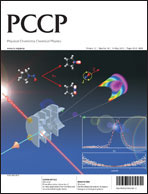Following the framework established by Hill and Chamberlin [T. L. Hill and R. V. Chamberlin, Proc. Natl. Acad. Sci. U. S. A., 1998, 95, 12779] to analyze the extension of thermodynamics of small systems to metastable states, we have adopted the same basic ideas to study the thermodynamic stability of core-shell nanoparticles. For the first time we are able to address the question of whether or not core-shell nanoparticles have a limit of stability when they are under oversaturation conditions. By the latter, we mean the excess of chemical potential of the adsorbate (shell) atoms with respect to its bulk material, which is the driving force for nanoparticle growth. In this situation the probability density exhibits multiple local maxima associated with different core-shell metastable states. The decrease of the free energy barriers for the growth of the bulk phase of the shell material is analyzed for increasing oversaturation. At large positive oversaturations, the barrier disappears and the core-shell NP become unstable with respect to the bulk deposit of the shell material. A brief discussion on the model is made illustrating its application to a specific system by means of computer simulations using realistic interatomic potentials. One of the most striking results of these specific studies is the occurrence or not of a core-shell under undersaturation conditions depending on nanoparticle size.

You have access to this article
 Please wait while we load your content...
Something went wrong. Try again?
Please wait while we load your content...
Something went wrong. Try again?


 Please wait while we load your content...
Please wait while we load your content...